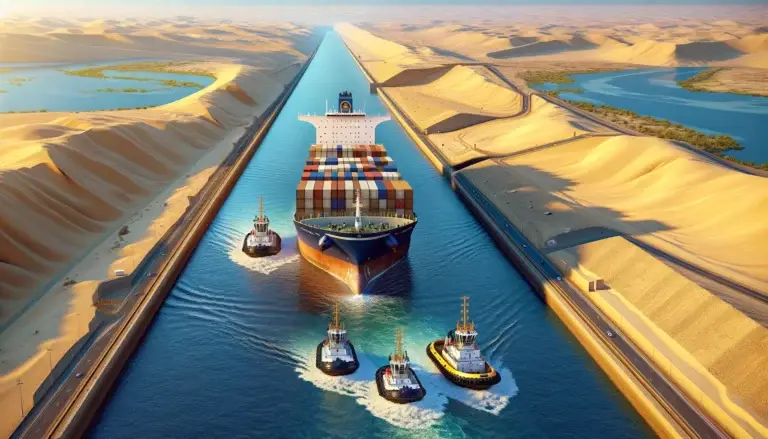Suez Canal

Table of Contents
What is the Suez Canal?
The Suez Canal is an artificial waterway in Egypt that connects the Mediterranean Sea to the Red Sea, providing a crucial maritime shortcut between Europe and Asia. It was constructed between 1859 and 1869 under the supervision of French engineer Ferdinand de Lesseps.
The canal stretches approximately 120 miles (193 kilometers) and allows ships to avoid the lengthy and perilous journey around the southern tip of Africa, known as the Cape of Good Hope.
The Suez Canal has been of immense strategic and economic importance, facilitating international trade and commerce by significantly reducing travel time and shipping costs. It has also been a site of geopolitical tension and conflict, with control over the canal being a source of contention between Egypt and foreign powers throughout its history.
Key Facts
The Suez Canal is an artificial waterway in Egypt, connecting the Mediterranean Sea to the Red Sea, providing a shortcut for maritime trade between Europe and Asia.
Construction of the Suez Canal began in 1859 under the supervision of French engineer Ferdinand de Lesseps and was completed in 1869 after ten years of labor and significant engineering challenges.
The Suez Canal stretches approximately 120 miles (193 kilometers) and includes several sections, including the northernmost Port Said section, the main canal, and the southernmost Suez section.
The Suez Canal revolutionized global maritime trade by significantly reducing the travel distance between Europe and Asia, eliminating the need for ships to navigate around the southern tip of Africa.
Control of the Suez Canal has been a source of geopolitical significance and strategic importance, as it provides access to vital shipping lanes and influences trade routes between Europe, Asia, and Africa.
The ownership and operation of the Suez Canal have undergone several changes throughout history, initially controlled by French and British interests and later nationalized by Egypt in 1956.
The Suez Crisis of 1956 occurred when Egyptian President Gamal Abdel Nasser nationalized the canal, prompting a military intervention by Britain, France, and Israel. This ultimately led to the withdrawal of foreign forces and reaffirming Egyptian sovereignty over the canal.
The Suez Canal has undergone several expansions and modernizations over the years to accommodate larger vessels and increase capacity, including adding parallel channels and deepening and widening existing sections.
The Suez Canal plays a vital role in global trade, with thousands of ships passing through it annually, carrying a significant portion of the world’s oil, natural gas, and cargo shipments.
The Suez Canal remains a critical artery for international commerce, providing a strategic link between the Mediterranean and Red Seas and facilitating the movement of goods and resources between continents.
Related Links
Globalization
French Revolution
Partition of India
Silk Road